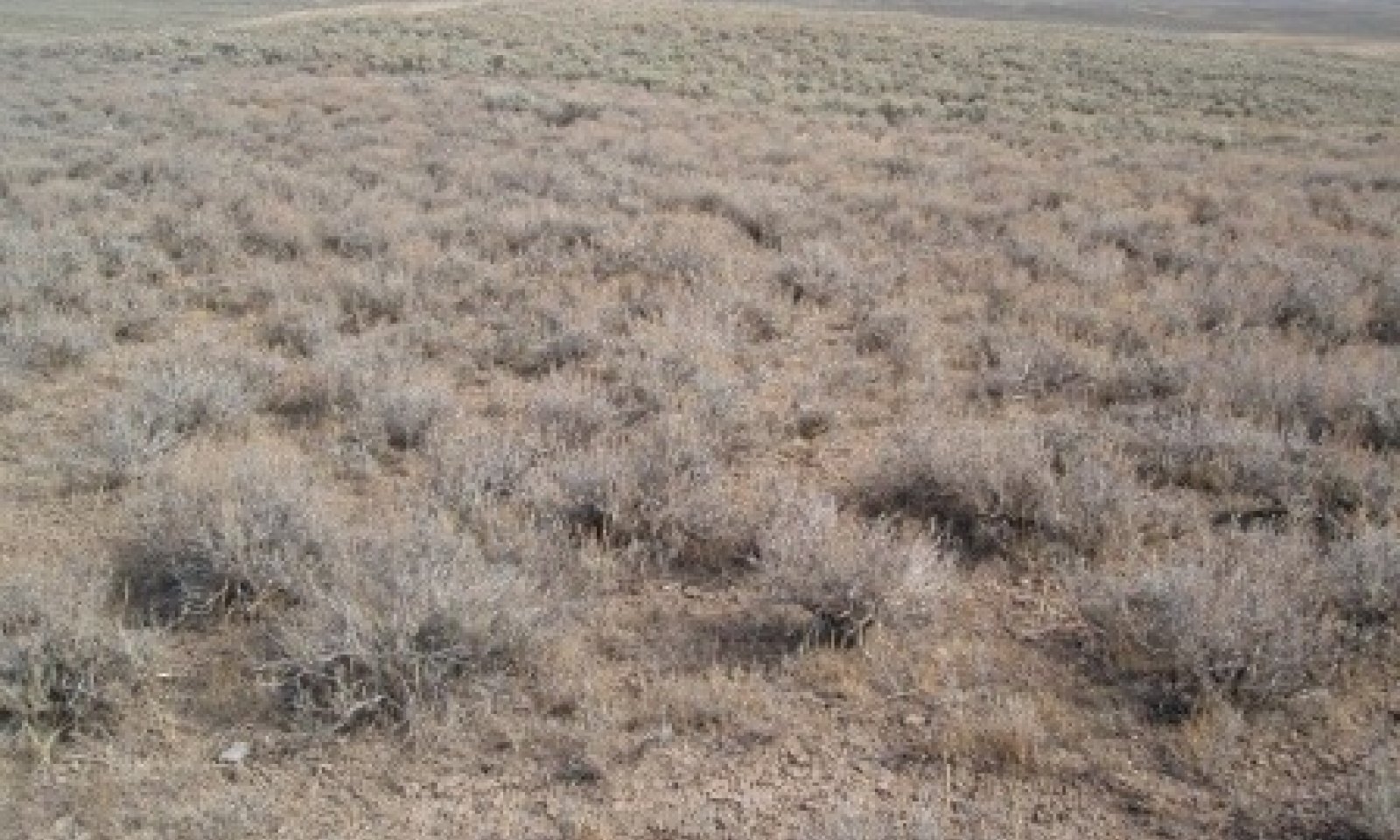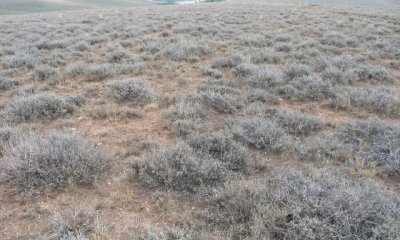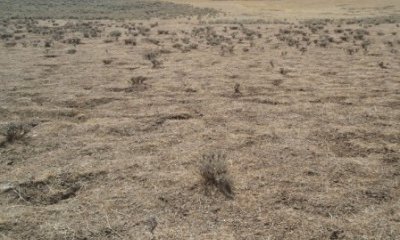
Loamy Argillic Wyoming Front
Scenario model
Current ecosystem state
Select a state
Management practices/drivers
Select a transition or restoration pathway
- Transition T1A More details
- Restoration pathway R2A More details
- Transition T2A More details
-
No transition or restoration pathway between the selected states has been described
Target ecosystem state
Select a state
Description
The Reference State consists of two Plant Communities: the Early Sage/Bunchgrass Community (1.1) and the Bunchgrass/Early Sage Plant Community (1.2). Each community differs in percent composition of bunchgrasses and percent woody canopy cover. Forbs are a minor component on this site. Woody foliar cover is less than 35 percent.
Two important processes occurring in this state result in plant community changes within Reference State: sagebrush killing disturbances (browse, insects, drought, fire) and time without those disturbances (referred to as “natural succession”). Early sagebrush (Artemisia arbuscular ssp. longiloba) is a unique sagebrush species due to its spring flowering period and its ability to tolerate both flooding and extreme drought (Shultz, 2009).
The shift from the Bunchgrass/Early Sage Plant Community (1.2) to the Early Sage/Bunchgrass Plant Community (1.1) is dependent on an increase of woody cover. Without sagebrush killing disturbance, shrubs will increase on this ecological site even with proper grazing management. Improper grazing management may accelerate the rate of increase and amount of woody species, resulting in a transition to the Grazing Resistant State (2).
The shift from the Early Sage/Bunchgrass to the Bunchgrass/Early Sage Plant Communities is dependent on sagebrush killing disturbances such as fire, drought, browse, and insects. Although this site is often not economical to treat for forage production, management actions have historically been used to mimic these processes through chemical treatments that focus on thinning and not removal. If total shrub removal occurs, soil erosion occurs, resulting in a degradation of soil and site stability. Prescribed fire is not often used on this site due to current land uses and lack of fuels and adequate burn windows. Mechanical treatments often result in degradation of soil and site stability.
Submodel
Description
The Grazing Resistant State (2.0) is characterized by an herbaceous layer dominated by short-statured bunchgrasses such as Sandberg bluegrass and rhizomatous grasses, upland sedges, and/or mat-forming forbs such as phlox, pussytoes, and buckwheat. Mid-stature bunchgrasses such as Idaho fescue, bluebunch wheatgrass, and bottlebrush squirreltail have become scarce or absent. There is one community in the Grazing Resistant State: the Early Sagebrush/Rhizomatous Wheatgrass Plant Community (2.1).
The site crosses the threshold to the Grazing Resistant State (2.0) from the Reference State (1.0) when desirable mid-stature bunchgrasses lose dominance. Once these key species become scarce, it is unlikely that they have sufficient reproductive capability (seed source, tillering, or resprouting) to recover dominance in a reasonable time frame without extra energy being added to the system.
The Plant Community in the Grazing Resistant State (2.0) is very resistant to change and therefore common in this MLRA. In many cases, the transition to the Grazing Resistant State (2.0) may have occurred many decades ago during an era of higher stocking rates and continuous grazing during the growing season. However, continual grazing during the critical growth period (roughly May-June) at proper stocking rates will facilitate the transition to this state and maintain it in a stable state. While dominance by rhizomatous grasses makes the return to the Reference State (1.0) plant community difficult, it also makes the site resistant to further degradation except in cases where overstocked or in the case of prolonged drought with full stocking. The main factor creating high resistance is that the bluegrass and rhizomatous grasses are highly grazing tolerant. Sandberg bluegrass and rhizomatous grasses are low to the ground, so, even under heavy grazing, enough biomass remains for the grasses to maintain plant vigor. Rhizomatous grasses successfully reproduce through underground rhizomes. The rhizomatous grasses can form mats that provide soil protection by protecting the soil from raindrop impact, decreasing the risk of soil erosion. However, overall soil health is lower than the reference state, primarily due to a reduction in soil organic matter due to a reduction in litter. The decreased infiltration is due to increased bare ground patch size and lack of litter that acts as a mulch in retaining soil moisture and retarding runoff.
Submodel
Description
This state contains one plant community, the Early Sagebrush/Bare Ground Community (3.1). It is characterized by sparse herbaceous plant cover dominated by early sagebrush and bare ground.
Communities in the Eroded State (3.0) have crossed a threshold (T2A) because of soil erosion, loss of soil fertility, and/or degradation of soil properties usually caused by mechanical disturbance and/or catastrophic wildfire outside of the natural fire regime. The consequent soil erosion affects the hydrology, soil chemistry, soil microorganisms, and soil physics and there is currently no known restoration pathway from this state.
Submodel
Mechanism
The driver for Transition T1A is continuous season-long grazing and/or long-term drought.
Continuous grazing and drought can lead to a decline in palatable mid-stature bunchgrasses such as Idaho fescue and bluebunch wheatgrass (USDA, NRCS, 2018). Letterman’s needlegrass is more grazing tolerant, but will eventually decline in plant density and vigor. As bunchgrasses diminish or die during periods of stress, low- stature bunchgrasses and rhizomatous grasses gain a competitive advantage, creating a shift in species composition towards less productive, shorter species. Bare ground often increases with larger gaps between the canopy and fewer herbaceous plants in the interspaces of the shrub canopy. Many of the remaining desirable bunchgrasses will be only found in the understory of the sagebrush canopy.
Once mid-stature bunchgrasses species become scarce, it is unlikely that they have sufficient reproductive capability (seed source, tillering, or resprouting) to recover dominance in a reasonable time frame without extra energy being added to the system. When the understory vegetation has been degraded to this point, the transition to the Grazing Resistant State (2.0) can occur, typically from the Early Sage/Bunchgrass Plant Community (1.1). An increase in woody canopy cover often occurs as well.
Management should focus on grazing management strategies that will prevent further degradation. This can be achieved through a grazing management scheme that varies the season of use to provide periodic deferment during the critical growth period (roughly May-June). Forage quantity and/or quality in the Grazing Resistant State (2.0) may be substantially reduced compared to the Reference State.
Rangeland Health Implications/Indicators: The Biotic Integrity is impaired through the shift in relative dominance of functional/structural groups, a decrease in the number of species within a functional/structural group, and/or reduced site productivity. The changes in bare ground affect both Soil Site Stability and Hydrologic Function.
Mechanism
The drivers for this restoration pathway are reduction of woody species and restoration of native herbaceous species by chemical treatment of sagebrush, and grazing rest or deferment. If some mid-stature bunchgrasses remain under the sage canopy, proper grazing management can move the site back to the Reference State (1.0) combined with a chemical sagebrush treatment. This could take multiple generations of management or could be accelerated with rest or deferment combined with successive wet springs conducive to seed germination and seedling establishment.
Mechanism
The driver for Transition T2A is continuous high intensity grazing and/or long-term drought. It can also be caused by mechanical treatments, sheep trailing, or catastrophic fire.
Soil erosion is accompanied by decreased soil fertility and soil and site stability. Several other key factors signal the approach of transition T2A: an increase in soil physical crusting, an increase in soil surface aggregate stability as the subsurface horizon is exposed, and/or evidence of erosion, including water flow patterns, development of plant pedestals, rills, and gullies. Very little litter is retained on the site to promote hydrologic function.
Model keys
Briefcase
Add ecological sites and Major Land Resource Areas to your briefcase by clicking on the briefcase (![]() ) icon wherever it occurs. Drag and drop items to reorder. Cookies are used to store briefcase items between browsing sessions. Because of this, the number of items that can be added to your briefcase is limited, and briefcase items added on one device and browser cannot be accessed from another device or browser. Users who do not wish to place cookies on their devices should not use the briefcase tool. Briefcase cookies serve no other purpose than described here and are deleted whenever browsing history is cleared.
) icon wherever it occurs. Drag and drop items to reorder. Cookies are used to store briefcase items between browsing sessions. Because of this, the number of items that can be added to your briefcase is limited, and briefcase items added on one device and browser cannot be accessed from another device or browser. Users who do not wish to place cookies on their devices should not use the briefcase tool. Briefcase cookies serve no other purpose than described here and are deleted whenever browsing history is cleared.
Ecological sites
Major Land Resource Areas
The Ecosystem Dynamics Interpretive Tool is an information system framework developed by the USDA-ARS Jornada Experimental Range, USDA Natural Resources Conservation Service, and New Mexico State University.






